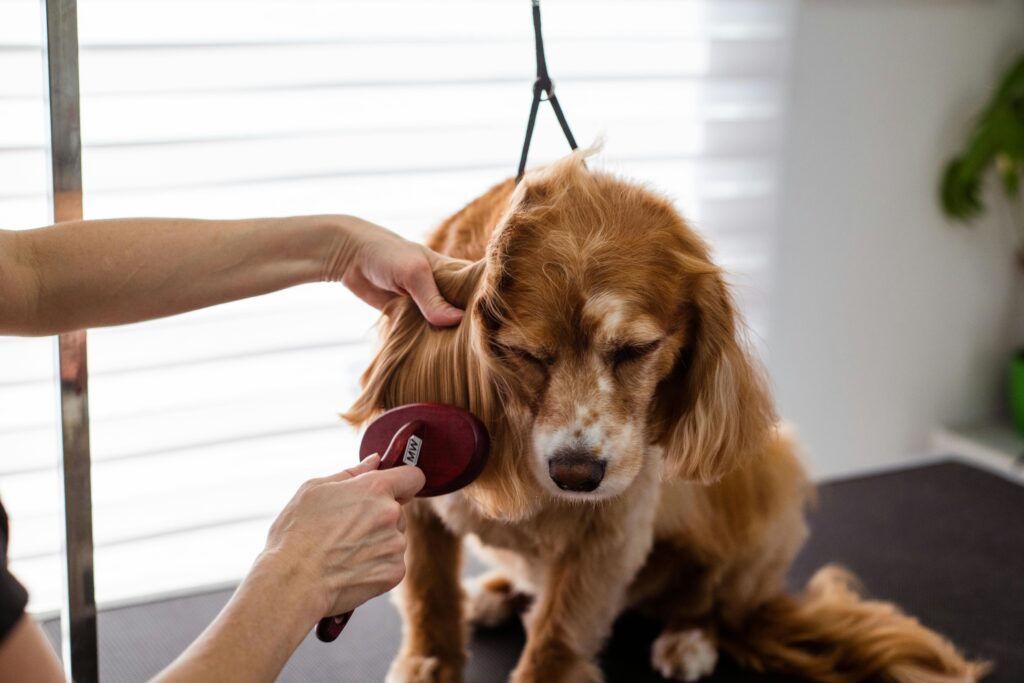
Brushing your puppy might seem like a grooming step for later in life, but starting early can make a big difference in their health, comfort, and behavior. One of the most common questions new dog owners ask is: When should you start brushing your puppy coat? The answer might surprise you — the earlier, the better!
Starting brushing early helps your puppy get used to grooming, keeps their coat healthy, and prevents tangles and mats as they grow. No matter what breed your puppy is, introducing them to regular brushing can save you from grooming challenges down the road.
Why Brushing Matters for Puppies
Your puppy’s skin and coat are constantly developing. During the early months, your puppy is shedding its soft baby fur, making room for their adult coat. Brushing during this stage not only keeps their fur neat, but also stimulates the skin, spreads natural oils, and helps you detect any skin issues early.
Brushing is also a bonding activity. When done gently, your puppy will associate grooming time with comfort and attention. It helps reduce fear or resistance when they eventually need professional grooming or vet exams.
Ideal Age to Start Brushing
The best time to start brushing your puppy coat is as early as 8 weeks old. At this stage, your puppy is beginning to adapt to new experiences. You don’t have to wait for tangles to appear — brushing should begin as a positive routine, even if their fur looks fine.
In the beginning, aim for very short brushing sessions, lasting only a few minutes. Use a soft-bristle brush or grooming mitt that’s gentle on their delicate coat and skin. The goal is to get your puppy familiar with the brush and the process, not necessarily to perform a full grooming session.
Choose the Right Brush for Your Puppy’s Coat Type
Not all brushes are the same, and it’s important to pick one that suits your puppy’s coat. Here are a few general guidelines:
- Short-haired puppies (like Beagles or Boxers): Use a soft-bristle brush or rubber grooming mitt once or twice a week
- Medium to long-haired puppies (like Golden Retrievers or Border Collies): Use a pin brush or slicker brush every other day to prevent tangles
- Curly or wavy-coated puppies (like Poodles or Doodles): Use a slicker brush and metal comb daily, as their coats are more prone to matting
If you’re unsure what coat type your puppy will have as an adult, ask your vet or groomer for guidance based on their breed or mix.
How to Make Brushing a Positive Experience
Brushing shouldn’t feel like a chore or punishment. Here are a few ways to help your puppy enjoy it:
- Start slow: Let your puppy sniff the brush before you begin
- Brush during quiet times: After play or a meal is ideal
- Use treats and praise: Reward calm behavior throughout the session
- Avoid tugging: If you hit a knot, work through it gently or use a detangler spray
- Be patient: If your puppy gets wiggly, take a break and try again later
The more positive your early brushing experiences are, the easier grooming will be throughout their life.
How Often Should You Brush Your Puppy?
The answer depends on their coat type and activity level. In general:
- Once or twice a week for smooth, short coats
- Every other day for longer or medium-length coats
- Daily for thick, curly, or double-coated breeds
If your puppy spends time outside, rolls in dirt, or is going through a shedding period, increase the frequency. Brushing isn’t just about beauty — it’s also about keeping your puppy comfortable and healthy.
Other Grooming Habits to Start Early
While you’re establishing brushing routines, this is also a great time to introduce other grooming habits like:
- Cleaning their ears
- Touching and trimming their nails
- Checking their paws
- Brushing their teeth
Early exposure makes everything easier later. If you wait until your puppy is older to start these routines, they may resist or become fearful.
What If Your Puppy Hates Brushing?
It’s common for puppies to squirm or resist brushing at first. Keep sessions short and sweet. If needed, break brushing into different areas — for example, brush the back in one session and the legs in another.
Use lots of praise and treats. Pair brushing with play or cuddle time. If your puppy becomes fearful or aggressive during grooming, speak to a professional trainer or groomer for help in desensitizing them gently.
Final Thoughts
Wondering when should you start brushing your puppy coat? The answer is: as soon as you bring them home. Introducing brushing early in life creates a positive habit, strengthens your bond, and sets your puppy up for a lifetime of healthy grooming routines.
By choosing the right tools, creating a calm environment, and being patient, your puppy will grow to love grooming time as much as playtime. It’s one more way to care for your puppy’s well-being — and keep their coat looking clean, healthy, and adorable. 🐾🪮
